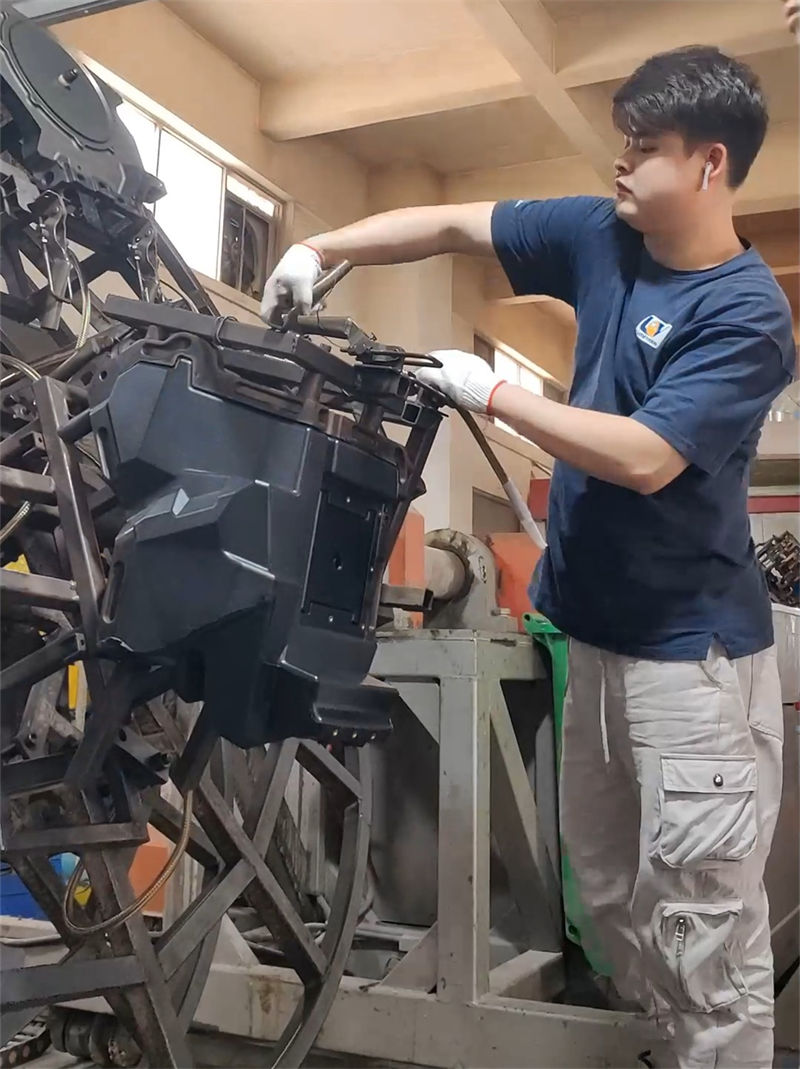How Complex Plastic Speaker Enclosures Are Made with the Rotomolding Process
 Mar 18,2025
Mar 18,2025

How Complex Plastic Speaker Enclosures Are Made with the Rotomolding Process?
The demand for high-quality audio equipment has driven innovations in manufacturing techniques, particularly for components like plastic speaker enclosures. Among these methods, rotational molding (rotomolding) has emerged as a preferred process for producing complex, durable, and acoustically optimized plastic speaker housings. Below is the step-by-step process of creating speaker enclosures using rotomolding, and its advantages and applications.
1. Introduction to Rotational Molding
Rotational molding is a manufacturing method suited for creating hollow, seamless plastic products with uniform wall thickness. Unlike injection molding or blow molding, rotomolding uses centrifugal force and heat to distribute powdered plastic resin evenly inside a rotating mold. This process is ideal for producing large, intricate parts like speaker enclosures, which require precise geometries and robust structural integrity.
2. Key Stages of the Rotomolding Process
Step 1: Material Selection
The process begins with selecting a thermoplastic resin, typically polyethylene (PE), polypropylene (PP), or specialized acoustically damped polymers. These materials are chosen for their durability, impact resistance, and ability to minimize resonance—a critical factor for sound quality in speaker enclosures.
Step 2: Mold Design and Preparation
A custom aluminum or steel mold is crafted to match the desired speaker enclosure design. Complex features such as internal baffles, mounting points, and porting channels can be integrated into the mold. The mold is then preheated to prepare for resin distribution.
Step 3: Loading the Resin
Pre-measured plastic powder is loaded into the mold cavity. The quantity of resin determines the final wall thickness, which is carefully calibrated to balance structural strength and weight.
Step 4: Heating and Rotation
The mold is sealed and transferred to an oven, where it rotates biaxially (simultaneously on two axes) at low speeds. As the mold heats up (typically between 300°F and 500°F), the resin melts and adheres to the mold’s inner surfaces. The rotation ensures even distribution, eliminating weak spots and achieving consistent wall thickness—even in geometrically complex areas.
Step 5: Cooling and Solidification
After the resin fully coats the mold, the assembly is moved to a cooling chamber. Fans or water sprays cool the mold, causing the plastic to solidify into its final shape. Controlled cooling prevents warping and maintains dimensional accuracy.
Step 6: Demolding and Finishing
Once cooled, the mold is opened, and the finished enclosure is removed. Post-processing steps include trimming excess material, adding threaded inserts for components, and surface treatments like painting or texturing. For speaker enclosures, internal acoustic damping layers or foam may also be added.

3. Advantages of Rotomolding for Speaker Enclosures
Design Flexibility: Rotomolding accommodates intricate shapes, curves, and internal structures that are challenging for other methods. This allows for optimized acoustic chambers and airflow pathways.
- Seamless Construction: The absence of weld lines or joints enhances structural integrity and reduces vibration-induced noise.
- Material Efficiency: Minimal waste is generated, as excess powder can be reused.
- Durability: Rotomolded enclosures resist impact, moisture, and temperature fluctuations, making them suitable for indoor and outdoor use.
- Cost-Effectiveness: Low tooling costs and suitability for small to medium production runs make it ideal for custom or niche audio products.
4. Applications in Audio Engineering
Rotomolded speaker enclosures are widely used in:
- High-Fidelity (Hi-Fi) Speakers: Their vibration-dampening properties enhance sound clarity.
- Portable and Outdoor Speakers: Lightweight yet rugged designs endure harsh environments.
- Subwoofer Housings: Thick, uniform walls minimize distortion from low-frequency vibrations.
Rotational molding has revolutionized the production of plastic speaker enclosures by combining design versatility, durability, and acoustic performance. As audio technology evolves, rotomolding will continue to play a pivotal role in meeting the demands of both audiophiles and industrial applications.
 Tel: 0086-13632687993
Tel: 0086-13632687993  Email: roto@lightvenus.com
Email: roto@lightvenus.com

 Home
Home Why Rotational Molding Process is Ideal for Producing Cleaning Robot Housings
Why Rotational Molding Process is Ideal for Producing Cleaning Robot Housings  You May Also Like
You May Also Like



 Tel
Tel
 Email
Email
 Address
Address








